Kick-Off Meeting Abstracts
*See also the CogniGron Kick-off Booklet

9:15 hrs Niels Taatgen (University of Groningen) - "From Physical Neurons to Cognitive Programs: How to build a Cognitive Computer Architecture?"
A Cognitive Computer based on neuromorphic hardware requires more than building neural networks out of new materials. Just like conventional computer architectures, multiple levels of abstraction are needed to support flexible computation, each with its own representation that can be reduced to the underlying level. A critical difference between computer and cognitive architectures is that the latter is based on learning. Here, I present a possible framework based on several existing theories, and show some examples of models that bridge different levels.

9:45hrs Theo Rasing (Radboud University of Nijmegen) -"All-optical switching and brain-inspired concepts for low energy information processing"
While data has become an indispensable part of modern society, the sheer amount of data being generated every second is breathtaking, both in its scale and in its growth, while the number of devices generating these data is rapidly expanding. This not only pushes current technologies to their limits, but also that of our energy production: our ICT and data centres already consume around 7% of the world’s electricity production and with the growth rate of ICT-technologies, this energy consumption is rapidly becoming unsustainable.
We try to develop materials and concepts that mimic the efficiency of the brain by combining local processing and storage, using adaptable physical interactions that can implement learning algorithms. We demonstrate, by modelling, that a reconfigurable and self-learning structure can be achieved, which implements the prototype perceptron model of a neural network based on magneto-optical interactions. Importantly, we show that optimization of synaptic weights is achieved by a global feedback mechanism, such that learning does not rely on external storage or additional optimization schemes. For the experimental realization of adaptive synaptic structures, we choose to use optically controllable magnetization in a thin Co/Pt film1, using circularly polarized picosecond2 pulse trains. The combined stochastic/deterministic nature of all-optical switching in this material2 offers the possibility to continuously vary the magneto-optical Faraday rotation with the number of pulses, yielding the necessary ingredient to realize a perceptron-like structure. First results of this model structure will be demonstrated.
1. C.-H. Lambert et al, Science 345, 1337 (2014)
2. R. Medapalli et al, Phys. Rev.B 96, 224421 (2017)
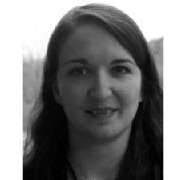
10:45 hrs Elisabetta Chicca (CITEC - Bielefeld University) - "Neuromorphic computing"
Man made computing architectures are based on principles fundamentally different from those of biological systems. Their elementary blocks operate in a serial manner and encode information in digital variables. Memory and computation rely on different components with distinct locations. In contrast, biological systems are fully parallel and transmit information in the form of all-or-none events which can be considered digital but encode information in analog variables (e.g. spike timing, mean firing rate). Memory and computation rely on the same physical substrate and are therefore co-localized.
These differences hinder a close mimicking of biological computation by conventional computing systems. Alternatively, physical models based on analog circuits and memristive devices can be constructed following the principles observed in nervous systems. In my talk I discuss this approach, its advantages and drawbacks, challenges and promises.

11:15 hrs Catherine Schuman (Oak Ridge National Laboratory) - "A Co-Design Framework for Neuromorphic Computing Research"
Neuromorphic research spans a wide variety of research topics, including materials science, devices, architectures, systems software, models, algorithms, and applications. To enable major advances in neuromorphic computing, these research efforts need to be linked through co-design and collaboration. In this talk, a co-design framework for neuromorphic computing research will be presented. This co-design framework includes both system software and training algorithms that can support a variety of architectures/devices as well as a variety of applications. Preliminary results will be presented from both the hardware perspective and the application perspective.
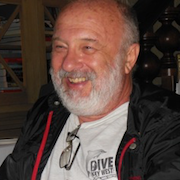
11:45hrs Ivan Schuller (University of California San Diego, USA) - "Quantum Materials for Energy Efficient Quantum Computing"

13:45hrs Davide Grossi (University of Groningen) - "A Stroll Through the Theory of Group Decisions"
In this talk I will give a brief overview of important results on the theory of collective decision-making: how systems consisting of distinct individual components can take ‘good’ decisions as a whole. The focus will not be on my own results, but rather on giving an overview of the field (which spans across different disciplines, from AI and CS to Economics and Biology), and its possible interfaces with cognitive systems and materials research.

14:15hrs Heike Riel (IBM Zurich, Switzerland)
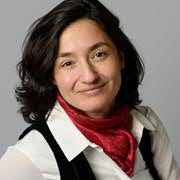
14:45hrs Maria Loi (University of Groningen) - "Carbon Nanotube: from nano-transistors to neuromorphic devices"
Carbon nanotubes have been considered for many years one of the few materials that can eventually substitute silicon, when the physical limit of the miniaturization of the silicon transistor channel length will be reached. In my presentation I will first discuss as we have solved one of the main problems inherent with the manipulation of carbon nanotubes, fabricating field effect transistors in a highly reproducible fashion by chemically self-assembly semiconducting carbon nanotubes. Then I will discuss if this nanomaterial can have a role in the fabrication of artificial neurons and in the future development of neuromorphic electronics.
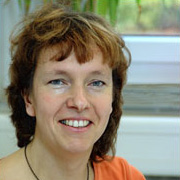
15:45hrs Regina Dittmann (Forschungszentrum Juelich) - " Redox-based memristive devices: Current status and challenges for their use in neuromorphic circuits"
Transition metal oxides exhibit a reversible, non-volatile change in electrical resistance upon electrical stimulus, a phenomenon known as resistive switching. In the simplest case resistive switching memory cells, or so called memristive devices, can be switched between a low resistance state (LRS) and a high resistance states (HRS) which can be interpreted as the logical "1" and "0", respectively. However, it is important to note that resistive switching cells often show multiple resistive states rather than only two logical states and can therefore be used for multibit memory or implemented as synapses in neuromorphic circuits.
Based on the current knowledge, resistive switching in memristive elements based on transition metal oxides can be ascribed to electrically induced redox-processes at the oxide/electrode interface, which occur either in a spatially confined switching filament, multiple filaments or in a spatially homogeneous, area-dependent manner.
In this talk, we will present the recent status of understanding of switching and failure mechanisms of redox-based memristive devices. Based on this, we will discuss challenges and strategies to gain control over the performance and reliability of the devices which will be crucial for their use in future neuromorphic circuits.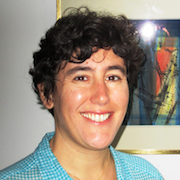
16:15hrs Julie Grollier (CNRS/Thales, France) - "Neuromorphic computing with spin-torque nano-oscillators”
The brain displays many features typical of non-linear dynamical networks, such as synchronization or complex transient behaviour. These observations have inspired a whole class of models that harness the power of complex non-linear dynamical networks for computing. In this framework, neurons are modeled as non-linear oscillators, and synapses as the coupling between oscillators. These abstract models are very good at processing waveforms for pattern recognition. However there are very few hardware implementations of these systems, because large numbers of interacting non-linear oscillators are indeed. Magnetic nano-devices, and in particular spin-torque oscillators are interesting in this context because of their tunability combined with their small size, CMOS compatibility, endurance and speed1. In this talk, I will show different ways of leveraging the non-linear dynamics of spin-torque nano-oscillators for neuromorphic computing, and present our first experimental results of speech recognition2,3.
1. Grollier, J., Querlioz, D. & Stiles, M. D. Spintronic Nanodevices for Bioinspired Computing. Proc. IEEE 104, 2024–2039 (2016).
2. Torrejon, J. et al. Neuromorphic computing with nanoscale spintronic oscillators. Nature 547, 428–431 (2017).
3. Romera, M. et al. Training coupled spin-torque nano-oscillators to classify patterns in real-time. ArXiv171102704 Cond-Mat Q-Bio (2017).

16:45hrs Giacomo Indiveri (UZH / ETH Zurich, Switzerland) - "Neuromorphic Electronic Agents: from sensory processing to autonomous cognitive behavior"
For many practical tasks that involve real-time interactions with the environment, conventional computing systems cannot match the performance of biological systems. One of the reasons is that the architecture of nervous systems, in which billions of neurons communicate with spikes in parallel, is very different from that of today's computers. Recently developed brain-inspired hardware architectures that emulate the biophysics of neurons and synapses in silicon represent a promising technology for implementing alternative low-power and compact computing paradigms.
| Last modified: | 29 October 2018 5.52 p.m. |
